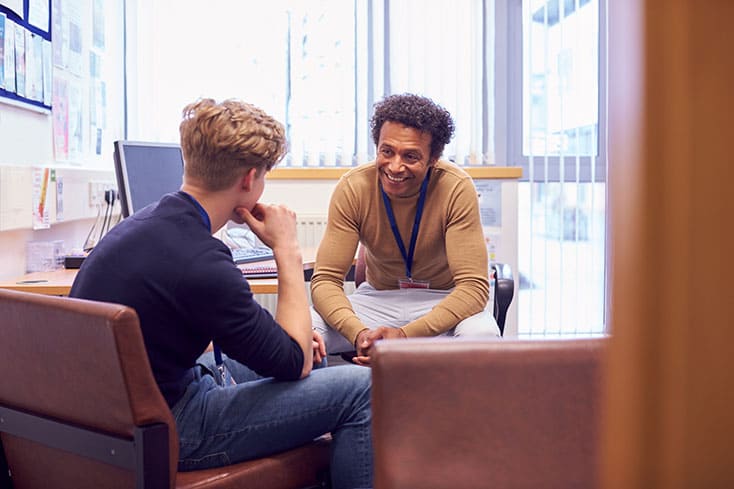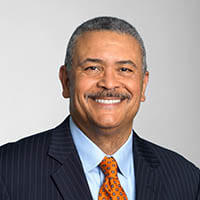April 28, 2022
By Daniel H. Gillison

The first three months of 2022 has been riddled with stories and statistics of young people struggling. And we just don’t seem to see an end to it.
My heart has been heavy over the last few days as I read the recent New York Times piece about the mental health crisis among U.S. teens, and about the recent passing of Sarah Shulze, Katie Meyer and Lauren Bernett. These young people were all around the same age as my cousin when she passed away from suicide. I am reminded of my own first-hand experience with the deep pain of losing someone you love in this tragic way — the shock, the confusion, the grief and the ripple effects such a devastating loss can create.
What strikes me the most about these young people is that, from the outside, you would never know they were struggling. Many have been student leaders, athletes and honor roll students with a circle of friends. They all had talents and opportunities. It serves as a somber reminder that we have to stop judging a book by its cover. It also reminds us how critically important it is to increase mental health services and prioritize early intervention.
Getting Help Early
The average delay between symptom onset of a mental health condition and treatment is 11 years. That means if someone begins experiencing major depression at 14, they are unlikely to receive help until age 25. For a young person, that means suffering for almost half of your entire life before getting the help you need. For many, that means the possibility of treatment comes far too late.
This has to change.
When we treat physical ailments, we don’t wait until a disease or infection is so serious that it becomes lethal or requires severe treatments, such as amputation, to treat it. So why would we approach mental health in this way?
We have to treat mental health conditions before they reach levels of crisis.
Tactics for Early Intervention
Increase Awareness and Services
Fifty percent of all lifetime mental illness begins by age 14, and 75% by age 24. So, to treat mental health conditions early, it’s critical that we increase services available to young people. We must also increase awareness about those services, so that when a young person begins struggling, they know where to turn.
Increase the Pipeline
To increase services, we have to talk about workforce development. How do we incentivize people to enter into and remain in the mental health provider space? How can we reduce barriers to receiving the necessary qualifications to provide mental health support? How do we empower and support peer specialists and school psychologists/social workers?
If we want more services, we have to invest in the people who provide them.
The Biden Administration has proposed doubling the number of mental health professionals in schools, starting with a $1 billion investment in FY 2023. That would certainly be a great start. But we need the House and Senate to enact these key provisions into law.
Increase Preventative Measures
When it comes to our physical health, we often speak of preventative measures to reduce the likelihood of serious illness. For example, we talk about exercise, diet and adequate sleep to prevent the likelihood of cardiovascular disease. There are similar preventative measures we can take to protect our mental health too, such as mindfulness, breathing exercises, challenging unhealthy thought patterns, developing supportive communities and more.
We need to explore how we can bring education about self-care, healthy coping mechanisms and other protective factors to young people. Providing youth and young adults tools for resilience can help guard them from developing more serious mental health challenges when they encounter stressors later.
How to Make Change
Thinking about all of the pain young people are experiencing right now and how much systemic change still needs to happen can be overwhelming. It’s important to remember that, so often, change begins on an individual level — change can begin with us.
Addressing the youth mental health crisis and saving lives through early intervention starts with making the simple and intentional choices to show up for the young people already in our lives every day by doing simple things like:
- Asking them how they’re really doing
- Reminding them it’s OK to not be OK
- Assuring them they are not alone
- Helping to connect them to resources
If you want to get even more involved, consider bringing NAMI’s Ending The Silence program, which contains mental health education for middle and high school students, to a school near you. You can also advocate with your local school boards, city councils and state legislatures to increase mental health professionals, education and services in schools.
We need to show up for our young people and invest in early intervention services as if people’s lives depend on it, because — as we are realizing with each new devastating story and statistic — they do.
If you or someone you know is experiencing emotional distress or thoughts of suicide, help is available. For immediate crisis support available 24 hours a day every day, you can call the National Suicide Prevention Hotline 1-800-273-TALK (8255) or text NAMI to 741-741.
For help finding general mental health resources and support, the NAMI Helpline is available Monday through Friday, 10 a.m.–10 p.m. ET, at 1-800-950-NAMI (6264) or info@nami.org.
Youth & Early Intervention Mental Health Resources:
- Resources for Kids, Teens & Young Adults – NAMI
- What You Need to Know About Youth Suicide – NAMI
- Ending the Silence (Program for Youth & Schools) – NAMI
- StigmaFree on Campus – NAMI
- Advocate for More Mental Health Care in Schools – NAMI
- How Early Intervention Impacted My Life – NAMI Blog
- What My Brothers Taught Me About The Importance of Early Intervention – NAMI Blog
- Blueprint for Youth Suicide Prevention – American Academy of Pediatrics
- Mental Health Resources for Young People of Color – The Steve Fund
- LGBTQ Youth Mental Health & Suicide Resources – Trevor Project
 Daniel H. Gillison, Jr. is the chief executive officer of NAMI (National Alliance on Mental Illness). Prior to his work at NAMI, he served as executive director of the American Psychiatric Association Foundation (APAF) in addition to several other leadership roles at various large corporations such as Xerox, Nextel, and Sprint. He is passionate about making inclusive, culturally competent mental health resources available to all people, spending time with his family, and of course playing tennis. You can follow him on Twitter at @DanGillison.
Daniel H. Gillison, Jr. is the chief executive officer of NAMI (National Alliance on Mental Illness). Prior to his work at NAMI, he served as executive director of the American Psychiatric Association Foundation (APAF) in addition to several other leadership roles at various large corporations such as Xerox, Nextel, and Sprint. He is passionate about making inclusive, culturally competent mental health resources available to all people, spending time with his family, and of course playing tennis. You can follow him on Twitter at @DanGillison.
Submit To The NAMI Blog
We’re always accepting submissions to the NAMI Blog! We feature the latest research, stories of recovery, ways to end stigma and strategies for living well with mental illness. Most importantly: We feature your voices.
LEARN MORE